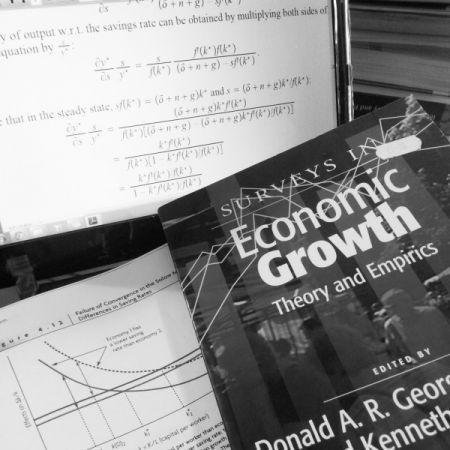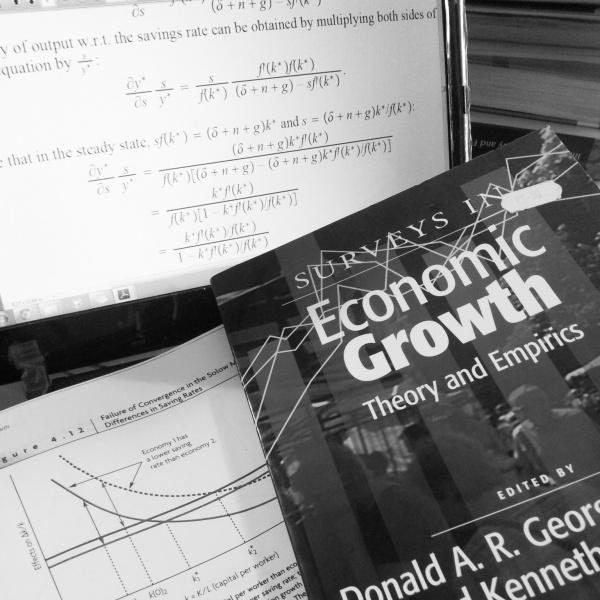Wan Hong envisions a future beyond Malaysia’s unique malaise — the middle income trap.
“Malaysia’s obstacles in achieving developed nation status by 2020” may seem like a mundane essay topic for secondary students – a karangan topic done to death. But it is a topic of discussion that has far reaching implications on the country’s future and wellbeing – the everyday rakyat’s wellbeing. Much has been touted about our nation’s economic progress and the aspiration of joining the ranks of high income nation club, but to those uninitiated, to the ordinary rakyat on the street, what indeed are our nation’s obstacles in realising the status of a developed nation?
I hereby pitch an argument, in reference to our nation’s economic progress, focusing less on data and diagrams but more on context.
Malaysia’s economy has grown leaps and bounds since independence well through the 70s, eradicating hard core poverty, creating a middle income class of abundant economic opportunities. Shifting from the agricultural sector towards resource commodities and manufacturing, our economy basically transformed from exporting rubber and tin to exporting manufactured products and electronics.
Back in those days Malaysia, as one of the fastest growing East Asian economies, retched up enviable economic growth that spurred the interests and strategic concern of Western economies then. We were poised to be among the ‘Asian Tigers’, on par with Singapore, South Korea, Taiwan and Hong Kong. We were, but then we weren’t.
Somewhere along the lines, in the 80s and 90s, Malaysia lost out on the race. While other countries innovated and outleaped us with technological prowess and cutting edge financial sectors, Malaysia relied heavily upon labour input. The source of economic growth can be broken into three components – productivity (akin to technological improvement), labour and capital growth; Malaysia specialised in labour intensive activities. Some argue that this dependence on low wage labour input delayed the process of industrial upgrading. And hence, we have since been caught in this so-called ‘middle income trap’.
Much of what is written on Malaysia’s economic progress touches on the issue of Malaysia’s ‘middle income trap’. This notion of the middle income bubble is often tossed around without much understanding of its underlying fundamentals. Truth is, this middle income trap is a vague notion even among the ranks of economists. Economists ponder if this middle income trap is just a myth or indeed a genuine trap. One such discussion is outlined here.
To make things easy, the way I would see this middle income trap is that our country is currently in a position that is not price competitive enough to match low labour cost countries, nor do we have an edge against the technologically advanced countries. We cannot possibly ascend down, yet we are not climbing up. We are trapped!
This seems to be our country’s debacle. Staying stagnant is not the way forward. Malaysia has to climb up the value chain and graduate from the middle income bubble – to be a high income, developed country.
Fortunately, the New Economic Model policy has outlined what is required of our economy to attain high income status. Interestingly, if you follow the argument of local economist Hishamh, his tabulation concludes that we will achieve high income nation even before 2020! The catch is that the New Economic Model sets the high income target in per capita income nominal terms and not in real terms. Statistically speaking, by the rate of Malaysia’s current economic growth, it is an achievable feat to reach high income status much earlier.
Let us not fool ourselves with mere manipulation of numbers. Will the rakyat on the street feel the sense of a truly developed nation when the mathematics falls into place to rank us as a high income nation? We need to move up the value chain. We need to catch up on our lost competitiveness that was once promising — and still is – but which becomes more fleeting by the day.
Malaysia’s economic conundrum is uniquely Malaysian. To plough through the economic research and literature on economic development dynamics, there are many references. Yet there is no example, no ‘been there done that’ case study to follow upon,. are It is often taken for granted that Malaysia’s demographic is ethnically diversified. To move up the economic ladder, Malaysia has to seek its own solution to its distinctively unique set of circumstances.

If we look towards the government for inspiration, does the government know what our economic challenges are? Yes. And no.
Policies such as the Government Transformation Programme, the Economic Transformation Programme and PEMANDU have clearly identified the challenges through the National Key Results Area – issues ranging from education and development to crime and corruption.
On the other end of the spectrum, it seems as if that our government is in denial of our plight. Our government still practices economically discriminatory policies, such as the reincarnation of New Economic Policy (NEP). People say that the only constant is change; I say that Malaysia’s only constant is constant.
The original NEP was there for a purpose and essentially so. But the NEP has now become a Never Ending Policy – a policy of the 1970s that should have seen a sunset clause in 1990s has become entrenched and has permeated the fabric of our society, economically and socially. Take note that we are moving towards 2020. Perhaps a policy half a decade old should acquaint a holistic paradigm shift as well.
No doubt this is a sensitive topic that has roused and stoked the sentiments of many, but it is imperative to acknowledge and address it. I am not arguing against affirmative action per se, but I am speaking out against the bigger picture of a decadent culture of patronage, discrimination, and (deliberate?) lack of transparency which eats into the competitiveness and productivity of our country. I am not here to profess a new economic silver bullet nor tam I calling for the total abolishment of the socioeconomic targets of the policy this very instance without proper review. In fact, I am not really pitching an argument that has not already been repeated many times by many people across the years. But I will argue for this same point again here, mainly because we have not seen credible change or a promise from the government that it will embark on an institutional reform to rid corruption and discriminatory practices, be it economic or social.
Politics is politics; economics is economics. Difficult as it would be, a line has to be drawn to put a foot down on manipulating politics against economics, and economics against politics, which serves only the interests of the cronies and the corrupt and not the welfare of the rakyat.
Nevertheless, I do not think that all hope is lost. During an UndiChats session in Pusat Rakyat with Datuk Seri Idris Jala of PEMANDU, I pitched him a question: how was it for him as a corporate man to be navigating among politics and politicians to work out our country’s economic challenges? His reply was succinct: if it is a good policy, everyone will be on board. Why go contrary to good incentives?
Enough has been said for us to know that it is competitiveness and productivity that we are in dire need of in order to propel our economy forward. Our government certainly recognises the legitimate challenges which have been under our noses all along. Does it have the will to defy them in true 1Malaysia spirit?
There is no way but up. Tick tock, tick tock.


As an investor I have experienced the Malaysian 'tactic' of attracting foreign investment and it is mainly based on producing nice numbers and statistics to lead the potential investor to invest funds into Malaysia. Unfortunately, there is no work ethic in Malaysia and this is present in the majority ethnic group which we all know too well for their antics. Today, with the advent of internet, the rise of other SEA nations such as Vietnam, China, Laos, etc and the now built-up history of Malaysian investment failures, makes for FDI more difficult to come by. I do not consider investment in property to contribute any long-term development of a country, especially in the case of Malaysia.
In light of the above, Malaysia is been shunned and the governments continuous habit of giving subsidies and handouts is having the complete opposite effect than that which is being promised and proudly announced. The promises or objectives to be reached within 2020 (we are in 2014 now) will never be reached mainly for the reasons mentioned above and the fact that the majority population has no work ethic or sense of responsibility…esssentially it is a question of 'carry-balls' and pretend that you know what you are talking about and doing but at the end of the end there is something missing in the whole equation…RESULTS. The lack of a result-oriented mentally will lead Malaysia to something it is an expert in..excuses and justifications..which produce no results at all. To this date and with all the state investments in education and research there no Malaysian companies which operate at the international private level with success.
Maybe a different approach, such as rewarding those who deserve it, would bring real and tangible results. Unfortunately this is not the agenda and words/slogans seem to have more value in Malaysia than actual facts.
I am sure our politician know what made Malaysia fall back against other countries.
The writer had missed many points in regard to Malaysia position after 40 years of Never Ending Policy.Malaysia had missed the boat and can never catch up for next 30 years.1 over 1 millions of mainly Chinese and Indian Malaysians moved to other countries, 2.Billions of funds had moved out of Malaysia,3.Over millions of gradutes of public universities are half baked, poor knowledge base, poor English and technical imcompetent.4.Public universities are managed by kampong professors and lecturers,5.Over 5.5 millions households earned less than RM3,000 per month.6. Billions of tax payer's money have been siphoned of by UNMO and its cronies. If is fallacy and wishful thinking that in 7 years time, Malaysia can achieve high income country
Someone mentioned in a seminal on Malaysia economic policy, raised Proton as a case study. He compared that Mamak's approach with Proton vis-a-vis S Korea's.
In short, the monopolistic Proton was/is babysit-ted all through the years. While the S Korean's 5 car manufacturers went through the firepbaths of the competitive marketing force.
20+ yrs down the road, Proton is still a cry baby, while the Only remaining S Korean, Hyundai, has become a world competitor in car manufacturing.
The morale of this story is competition – let market force determines the growth.
So, for M'sia to really achieve the TRUE vision 2020, there must be a REAL competitive environment. This time it is human competition via comparison. Fact of the matter is there must be a mental revolt with the Melayu genY&Z . This is NOT racist but a lesson in survival of the fittest.
Dont give excuses – whatever u said could be found in that S Korean example. Monopoly distribution channel? Being there. Corporate kin-ship among the big boys? Normal. Cut-throat pricing? This is business.
The umno govt has been dead set to bootstrap the Malay's economic standings all these yrs. There is no much to shout about except the opulent of their elites, which is achieved via u-known-whats. The general Mat/Minah is still trapped in a circle of make-end-meet. They need a cause to break out.
There is now – Penang. All this bn govt needs is to give a free hand to the economy development of Penang state govt. Let Penang creates a competitive role model for the genY&Z melayu administrators, of other states, to prove their worth. The country has poured millions in training them, despite there were better choices. This is pay-back time, iff this new genY&Z Melayu has what it takes. Otherwise, u people will forever be labelled as henpicked & 1st choice by default.
Show u people can do BETTER than Penang. Face the marketing challenge head-on & dont talk c**k if u have what it takes.
In short – look at Penang like Malaysia looked at S'pore. & We lost that one for pure arrogance!
Nice!